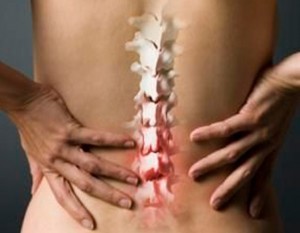There are a lot of people with osteochondrosis right now. Many of them are not even aware of the problem. Meanwhile, if you don’t start treatment on time, complications will occur that will make you feel like your whole life. Osteochondrosis, like many other diseases, “becomes younger” and significantly impairs quality of life, knocking them out of their usual rhythm.
In our article, we can learn a little about the disease itself, as well as detail the medical method of its treatment.
Osteochondrosis and its types
Osteochondrosis is a deformity of the articular cartilage, spinal bone tissue, and intervertebral discs.
Osteochondrosis occurs in

- lumbar (lumbosacral),
- neck,
- chest.
Causes of osteochondrosis:
- straight walking,
- curvature of the spine,
- spinal cord injury,
- flat feet,
- Frequent heavy lifting,
- frequent changes in tribal position,
- Prolonged discomfort
- spine overload,
- physical inactivity and obesity,
- malnutrition,
- stressful conditions.
Stages of osteochondrosis development
- Due to certain changes in the intervertebral disc, vertebral instability occurs. The spine is very prone to injuries.
- The destruction of the fibrous ring of the intervertebral disc begins. The intervertebral gap decreases.
- The annulus fibrosus ruptures. The nucleus of the intervertebral disc protrudes. Spinal deformity is provoked due to the development of intervertebral hernia.
- Severe pain syndrome occurs. Movements become restricted due to the development of bone growths and the ossification of the ligaments of the spine.
Symptoms of osteochondrosis
Lumbosacral region
- Constantly sore back pain.
- Feeling of pain and numbness in the limbs.
- Decreased physical activity.
- Increased pain with sudden movements, weight lifting, exercise, sneezing and coughing.
Neck region
- Arm and shoulder pain, headache.
- Vertebral artery syndrome (burning throbbing headache, dizziness, head noise, colored spots and "flies" in the eyes).
Chest Region
- Pain in the internal organs, especially in the chest (“stake in the chest”) and in the heart area.
Determining the diagnosis
The diagnosis is made at the appointment of a neurologist based on the patient's complaints (pain syndrome, restriction of mobility, etc. ). The spine is examined by the patient while standing, sitting, and lying down (at rest and in motion). When examining the back, attention is paid to posture, structural characteristics of the torso, lower angles of the shoulder blades, lateral contours of the neck and waist, position of the shoulder girdles, etc. The doctor then usually directs the patient to an X-ray, computed tomography, or MRI to help clarify and concretize the diagnosis, determine the extent of the damage, and uncover hidden abnormalities. Based on the data obtained, the neurologist will prescribe the appropriate treatment. As a general rule, it is a complex therapy that includes the use of medications, massage, exercise, and other methods.
Therapeutic practices in lumbar spine osteochondrosis

Treatment of Osteochondrosis with Medications
First of all, it should be noted that in the initial stages of developing osteochondrosis, you can in some cases do so without medication. It will be enough to use physiotherapy, all kinds of applicators, as well as reduce loads and eliminate other causes of the disease. If symptoms worsen and studies show characteristic changes, medications should be used to help control the cause and symptoms of osteochondrosis.
Treatment of osteochondrosis with drugs is indicated during the period of exacerbation and is intended to alleviate the inflammatory process, relieve pain, and enhance metabolic processes due to internal administration or administration of drugs by injection.
Due to the fact that osteochondrosis is a systemic disease that negatively affects various organs and systems, treatment should be comprehensive. Medications for the treatment of osteochondrosis perform the following tasks:
- pain relief,
- remove inflammation,
- Improving blood circulation to affected tissues,
- cartilage recovery,
- restoring joint mobility,
- Eliminate depression caused by constant pain.
So what medications can a neurologist prescribe for osteochondrosis?
- NSAIDs (non-steroidal anti-inflammatory drugs).
Eliminate inflammation and pain. It is used externally (gel, cream), internally (capsules, tablets) and in the form of injections (intramuscularly, intravenously, subcutaneously).
- vasodilators (vasodilators).
As a result of osteochondrosis muscle tension and pain, blood vessels narrow. To avoid unwanted consequences, your doctor may prescribe vasodilators to improve the restorative effect.
- Muscle relaxers.
Muscle relaxants have a relaxing and calming effect on muscles. The healing process without drugs in this group progresses more slowly because their properties normalize blood circulation, dull the pain sensation, return mobility, and allow the affected tissues to recover faster.
- Chondroprotectors.
Chondroprotectors do not cause further destruction, they stabilize the condition. The use of chondroprotectors is long-term, lifelong, the effect occurs after at least 6 months of treatment. Chondroprotectors are used externally, internally and in the form of injections.
- glucosamine
- Chondroitin
- glucosamine + chondroitin
- glucosamine + chondroitin + vitamins
- Sedatives (sedatives).
Long-term pain syndrome can cause stress and depression. In this case, valerian, motherwort, combined herbal preparations are prescribed. In more severe disorders, antidepressants and sleeping pills are used to improve the process of falling asleep and the quality of sleep.
- Vitamins and vitamin-mineral complexes.
B vitamins are of great importance here as they can restore the sensitivity of the affected nerve fibers and reduce pain.
Vitamin and mineral complexes can also be prescribed to strengthen the body in general.

























